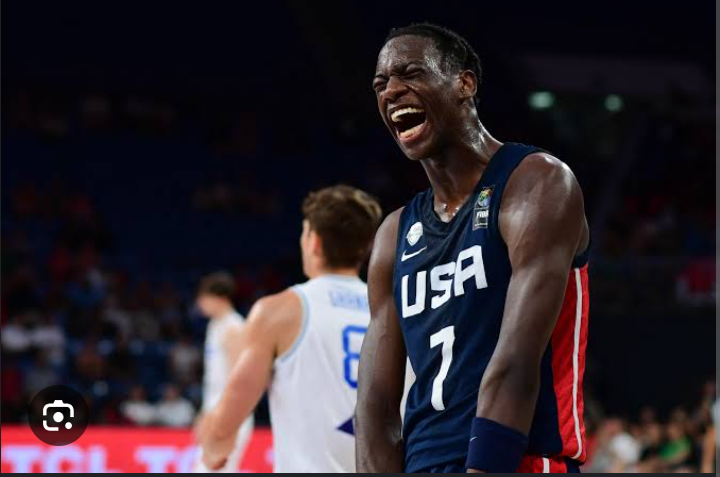A.J. Dybantsa’s Shocking BYU Commitment: How NIL Money Influenced the No. 1 Recruit’s Decision Over Alabama and Other Powerhouses
In one of the most surprising recruiting decisions in recent history, A.J. Dybantsa, the No. 1 high school basketball prospect in the class of 2025, has committed to BYU over traditional powerhouses like Alabama, Kentucky, and Duke. While BYU has a strong basketball program, it is not typically in the conversation for the nation’s top recruits. So, what led Dybantsa to Provo? The answer appears to lie largely in the influence of Name, Image, and Likeness (NIL) deals, which have completely reshaped the college basketball recruiting landscape.
The Power of NIL in Recruiting
Since the NCAA’s decision to allow athletes to profit from their name, image, and likeness, recruiting battles have taken a dramatic turn. Historically, blue-blood programs such as Duke, Kentucky, and North Carolina held a near-monopoly on top recruits due to their track record of developing NBA talent and competing for national championships. However, with the rise of NIL, smaller programs with strong financial backing can now outbid traditional powerhouses for elite players.
BYU, despite not having the same national reputation as schools like Alabama or Kansas, has a robust NIL infrastructure. The university’s association with The Church of Jesus Christ of Latter-day Saints (LDS Church) means it has deep-pocketed donors and a passionate fan base willing to invest in athletes. According to sources close to the situation, Dybantsa’s NIL package at BYU is rumored to be one of the most lucrative in college basketball history, surpassing offers from some of the biggest programs in the country.
Why Dybantsa Chose BYU Over Alabama and Others
Dybantsa’s decision to choose BYU shocked many, given that he had taken visits to Alabama, Duke, and UConn—schools with proven track records of sending players to the NBA. However, his commitment highlights how recruiting priorities have changed in the NIL era.
While Alabama and Kentucky could offer top-tier coaching and exposure, BYU reportedly put together an NIL package that included endorsement deals, business opportunities, and a strong financial structure that would allow Dybantsa to earn significant money before even playing an NBA game. Additionally, BYU’s focus on branding and media exposure—given its national TV contract and massive online following—could help Dybantsa build his personal brand in ways that other schools couldn’t.
Beyond money, sources suggest that BYU also pitched a unique off-court experience, emphasizing personal development, academic support, and a tight-knit community atmosphere. While BYU’s strict honor code and religious ties may not appeal to every top recruit, Dybantsa reportedly felt comfortable with the program’s vision for his future.
What This Means for College Basketball
Dybantsa’s commitment to BYU is a sign of the times. In the past, a program like BYU would have had little to no chance of landing the nation’s top recruit. Now, with NIL money playing a central role, smaller programs with strong financial backing can suddenly compete with—and even surpass—college basketball’s traditional giants.
This decision could set a precedent for future top recruits, proving that financial incentives can outweigh historical prestige. Whether this shift is good or bad for college basketball remains to be seen, but one thing is certain: the NIL era has fundamentally changed how recruiting works, and A.J. Dybantsa’s shocking BYU commitment is just the latest example.
















